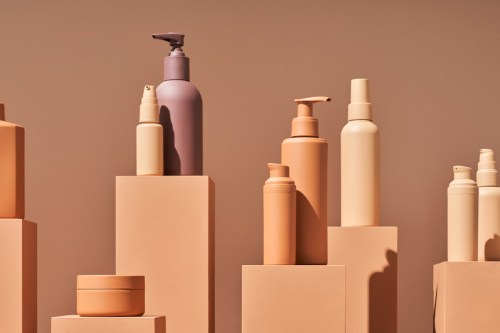You know the saying, “If it doesn’t exist, create it”? I can’t claim to have coined the term, but as a founder of a Filipino beauty brand, “F-Beauty” is how I’m staking my claim in this world. I, of course, love the irony of it, but for me, it has a deeper meaning. When I first started Kaya Essentials, I sold my products at farmers’ markets and pop ups. After seeing me, so many potential customers would assume that my four-foot table would be a collection of imported Korean beauty products. And on more than one occasion, buyers at retailers would want to put my products on their K-beauty shelves to pass them off as something they weren’t. It occurred to me that, in the same way many Americans see Asian Americans as a monolith, they can see Asian beauty as a monolith as well.
I’m a huge fan of K-beauty, and especially admire how the category has cultivated a space for indie brands to be celebrated like never before. I also have some Japanese beauty favorites and wellness products rooted in Traditional Chinese Medicine that are staples in my routine. But it feels that when the industry celebrates on-trend Asian beauty, it heavily focuses on East Asian products and routines.
Of course, major retailers both drive and respond to consumer demand, and Allied Market Research reported that K-Beauty is projected to reach $13.9 billion by 2027. As a Southeast Asian beauty brand founder, however, it can feel like there isn’t space to celebrate the products and rituals that I grew up with. When I created Kaya Essentials, I sometimes doubted the power of my cultural heritage because I didn’t think customers would be interested if I couldn’t capture unique Filipino rituals in the almost-magical way that the beauty industry covers K-Beauty.
This Parisian Skincare Brand Is Launching in the United States for the First Time—Here’s What a Derm Wants You to Know

We’re Calling It: Cleansing Balms Are the Face Wash of the Future—Here Are 3 to Add to Your Cart

This Is the One Product That Scarlett Johansson Always Keeps in Her Purse and on Her Bedside Table

Even after founding my company, I’ve wondered when South and Southeast Asian products would start getting the credit they deserve. Martha Soffer, who is one of the leading pioneers of modern Ayurveda and founders of celebrity-frequented Surya Spa, once said: “I’ve been waiting for this moment for 30 years, for people to say, ‘Ah, Ayurveda. I know what that is.’” I identify with that. But I also can’t keep waiting. Inclusivity and diversity within the skin-care industry should be infinite, not bounded by shelf space, listicles, or beauty campaigns.
By widening the representation of what it means to be Asian—beyond fair skin and jet-black straight, shiny hair—we can begin to dismantle Eurocentric beauty standards and colorism from prevailing in both Asia and Asian American communities. Because as is the case with my home, the Philippines is a melting pot of Indigenous, Malay, Chinese, and Spanish descent, and it is impossible to claim one archetype that is Filipino; likewise, Asians and Asian Americans shouldn’t have to fit one mold.
The model minority myth presents a singular stereotype that Asian Americans are “smart, wealthy, submissive and hard-working,” which oversimplifies and disregards the different ethnic groups that make up the Asian American community and their struggles. In reality, the Pew Research Center reports that Asian Americans have the greatest income inequality of any ethnicity in the United States. The beauty industry shouldn’t fall victim to this model minority myth. There is a missed opportunity in viewing Asian beauty as a monolith. We need to advocate for more diverse Asian representation from beauty companies and retailers—showcasing our diverse skin tones and facial features as well as straight, wavy, and curly hair textures.
Diversity makes our communities stronger. After all, don’t we all love the diversity in our beauty products? There’s something empowering in curating the different products we choose for our mornings and nights, for our summers and winters. By that same token, discovering not only the efficacy, but also the stories, the ingredients, and the cultural significance of beauty rituals from all over the world not only is better for us but it also makes our communities stronger.
Oh hi! You look like someone who loves free workouts, discounts for cult-fave wellness brands, and exclusive Well+Good content. Sign up for Well+, our online community of wellness insiders, and unlock your rewards instantly.
Sign Up for Our Daily Newsletter
Get all the latest in wellness, trends, food, fitness, beauty, and more delivered right to your inbox.
Got it, you've been added to our email list.








